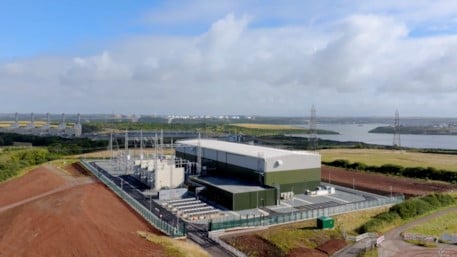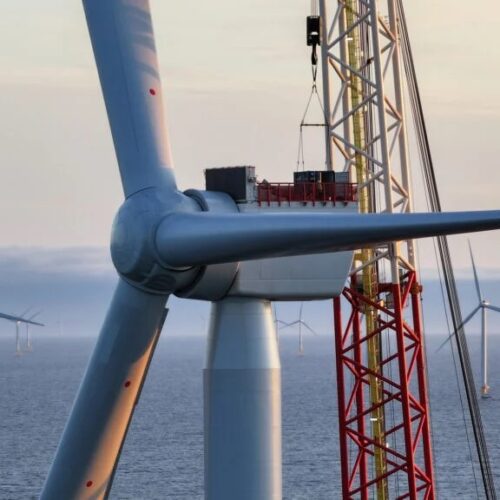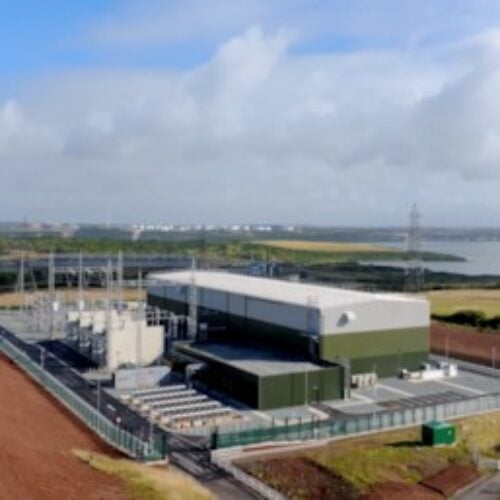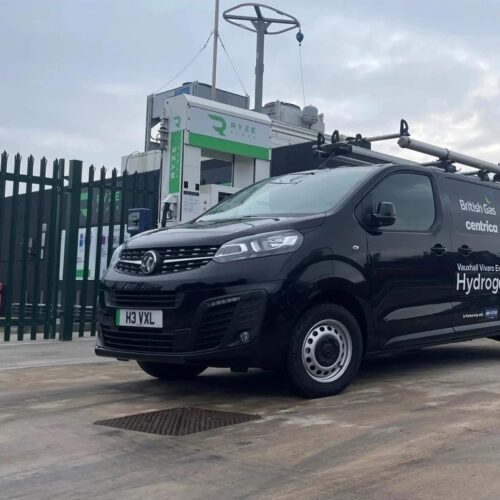Irish minister for climate, environment and energy Darragh O’Brien has welcomed news that the Greenlink Interconnector has commenced operations.
The 504MW subsea electricity interconnector runs from National Grid’s Pembroke substation to EirGrid’s Great Island substation in County Wexford.
After a three-year testing period, the 32kV interconnector is now transporting electricity via two high voltage direct current (HVDC) cables between Ireland and the UK. Construction of the project, which included installation of converter stations adjacent to the substations at each end, took three years.
The project enables electricity to be shared between the two countries, and will be a back-up power supply if the electricity system on either end has reduced capacity. This is particularly useful in the transition to variable renewable energy generation.
Minister O’Brien explained: “Increased electricity interconnection will be a key enabler in our growing use of renewable energy, facilitating the delivery of the necessary infrastructure to support our energy ambitions in our journey to a net-zero power system.”
The Greenlink Interconnector is recognised as a ‘Project of Common Interest’ (PCI), which is the categorisation given to key cross-border infrastructure projects that link the energy systems of European countries, and is considered to be of strategic importance. As a PCI, it secured funding under the Connecting Europe Facility.
Ireland has an ambition to become a net exporter of electricity as part of its aim to make Ireland central to wider European energy plans.
Greenlink joins the already-operational East-West Interconnector to double Ireland’s interconnection capacity to 1GW.
Interconnector delays risk Northern Ireland’s renewables target
The East-West Interconnector was commissioned in 2012, after initial plans were put forward in 2004. A few years later, in 2006, plans were drawn up for a North-South Interconnector that would run from Ireland to Northern Ireland, as part of the post-peace collaboration between Belfast, Dublin and London.
The project has faced repeated delays, blamed on planning permission, and is now not due to be operational until 2031, rather than the previous date set for 2027.
Analysis by Cornwall Insight shows that this delay to the €350 million (£300 million) project could see renewable generation in Northern Ireland meet just 35% of the nation’s electricity demand by 2030.
This is lower than the 2024 target of meeting 43.5% of electricity demand with renewables, and below Northern Ireland’s legally binding 80% renewables target.
The project could face more delays as a result of a judicial review that began on 9 April, with more Northern Irish objections to the overhead cabling and pylons facilitating the project, which locals argue does nothing for the state.
Cornwall Insight’s analysis shows this to be untrue, however, and raises concerns about the long-term viability of future renewable projects in Northern Ireland. Electricity demand is expected to rise over the next decade in line with wider electrification, and renewable output will need to grow just to maintain current percentages of renewable generation.
Without the ability to export surplus power, new generation could be wasted. Cornwall Insight had previously forecast that Northern Ireland would reach 45% renewable electricity by 2030, which is still below target.
According to Kitty Nolan, modeller at Cornwall Insight: “The delay sends the wrong signal at a crucial time”.
Nolan added: “A functioning, flexible grid is essential to unlocking investment, maintaining momentum and ultimately hitting Northern Ireland’s energy targets. Without it, the region faces a widening gap between ambition and delivery.”






